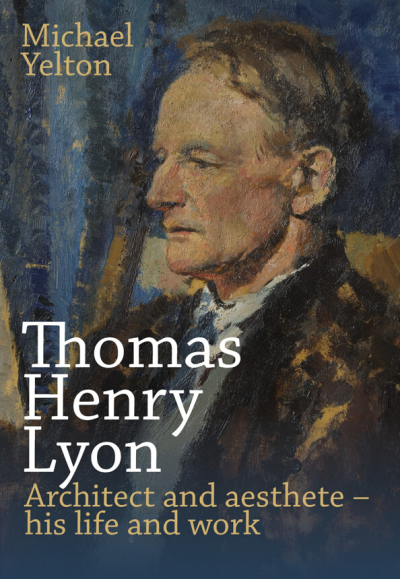Corpuscle on Corpuscle, Michael Yelton publishes book on the work of architect Thomas Henry Lyon
Thomas Henry Lyon: Architect and aesthete – his life and work (1869-1953) explores the extensive contributions Lyon made to the development of the College between the world wars.
Law man and author Michael Yelton (m.1968) was a Fellow of Corpus from 1977 to 1981, a barrister for 25 years and then a Circuit Judge for a further 21. Michael has written extensively on a number of subjects, including architecture in the Twentieth Century. Here he sheds some light on the significance of Lyon and his work.
Architect Thomas Henry Lyon (m.1890) was appointed as the first Director of Design for the School of Architecture in Cambridge in 1919 and although he was never a Fellow of Corpus, he lived in the College for almost 20 years thereafter, and was given rooms in Trumpington Street for his drawing office.
Yelton found that Lyon had an interesting life, in which Corpus played a very important part. “He disliked and disparaged women but married three of his sisters off to his contemporaries at Corpus. One of his sisters married Percy Wise, who became the leading Anglo-Catholic priest in Australia and provided Lyon with his first commission for a new church, in Adelaide. Another married E.C. Pearce, who became Master of Corpus in 1914, and the third married the writer John Cowper Powys, whose relationship with Lyon was difficult and has often been misrepresented.”
The author explains “In 1911 Lyon made his name by rebuilding Sidney Sussex Chapel, bringing him a great deal of work in Cambridge. Even before the First World War, he provided the cross and candlesticks for the Corpus Chapel, had the Hall floored in oak instead of the stone paving it had had before then, redecorated the Hall, designed the ‘Crystal Palace’, the washroom block in the corner of Old Court, and a new neo-Tudor block behind the Court, and began the transformation of the Court itself to a state which all of us know, which included removing the ivy which had engulfed it.
“After the War, Lyon was living in the College and his contribution to its development between 1919 and 1938 was immense but often overlooked, perhaps, because of resentment at the fact that he designed the rooms which were erected on top of New Court. It is little known that there was a proposal to add further attics on either side of the Chapel, including on the roof of the Master’s Lodge. Lyon designed the Fletcher and Marlowe plaque in Old Court, refurbished the [Old] Combination Room and provided it with its towering fireplace, and drew the plaque for the dead of the War. He also designed the Butler, now Parker, Library, and the groundsman’s house and cricket pavilion on the new playing fields, as well as smaller contributions. His contribution to Corpus was thus immense and has never properly been documented. It was accompanied by a great deal of work elsewhere in Cambridge, especially a number of war memorials in colleges, including one in a side chapel in King’s and another in Trinity. His church of St Augustine, Wembley Park was a disaster and had to be demolished after a short life, but that of St George, Chesterton, was much more successful.”
Get a copy of the book here:
https://www.sacristy.co.uk/books/biography/thomas-henry-lyon


